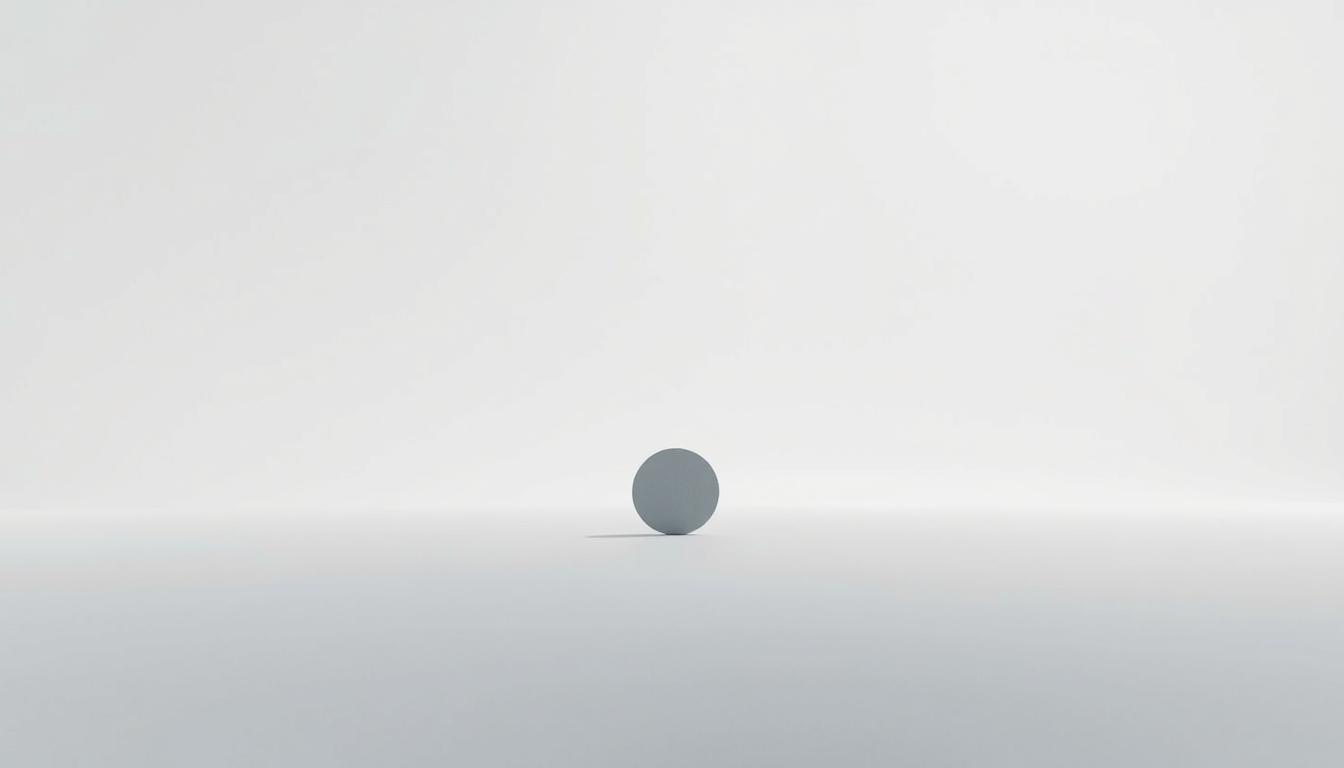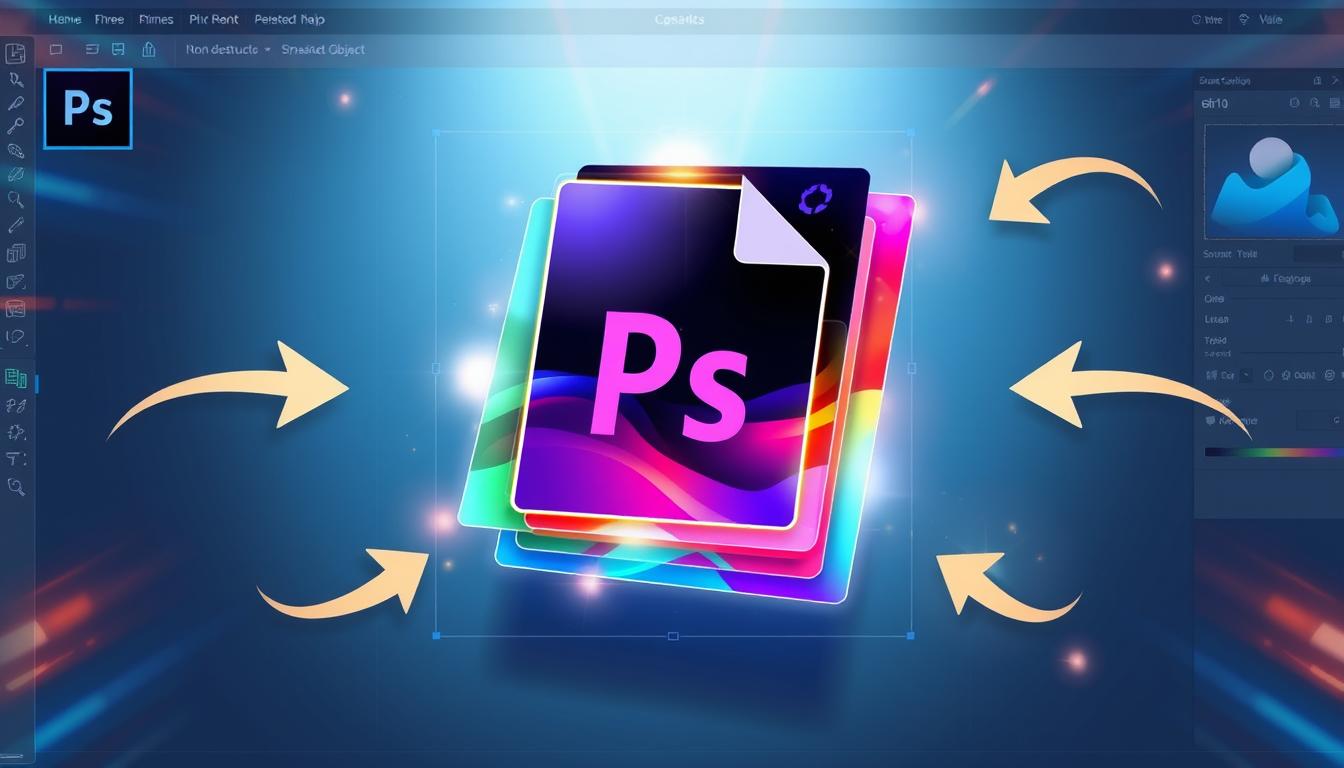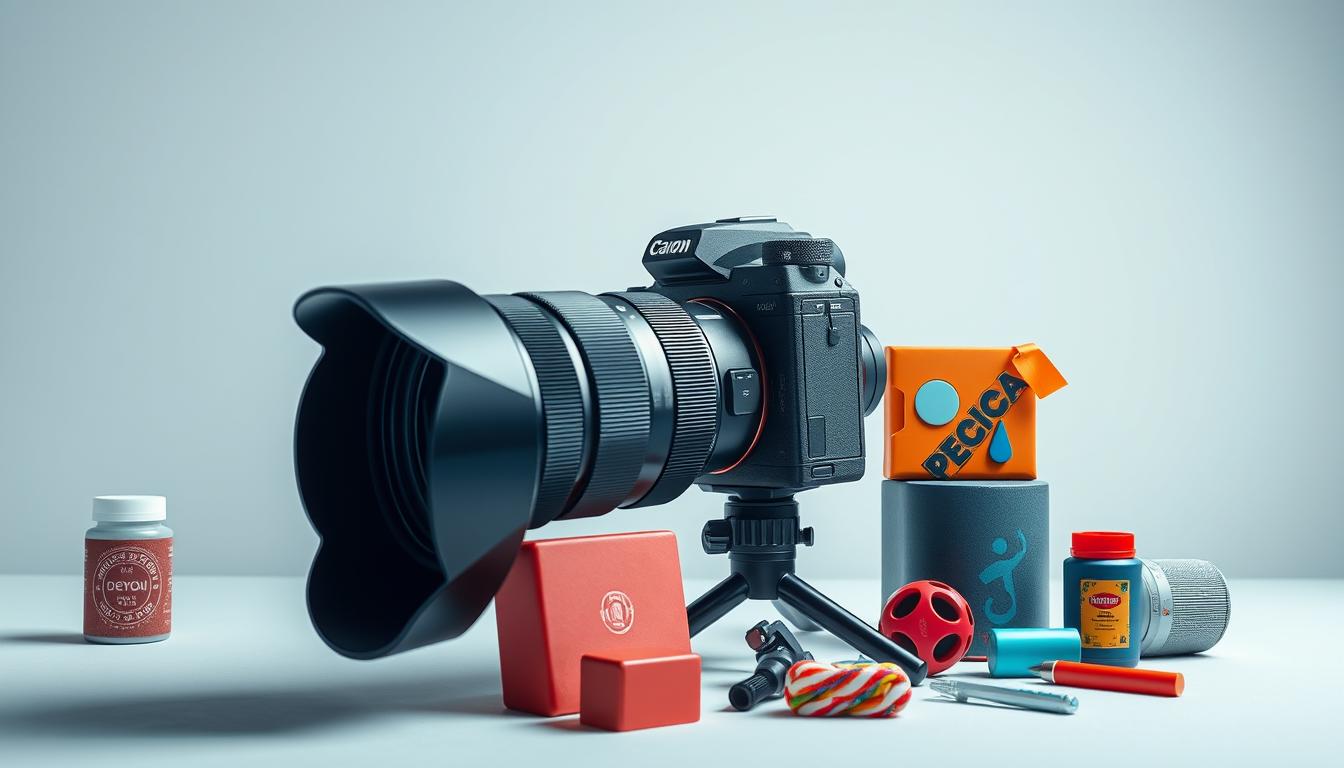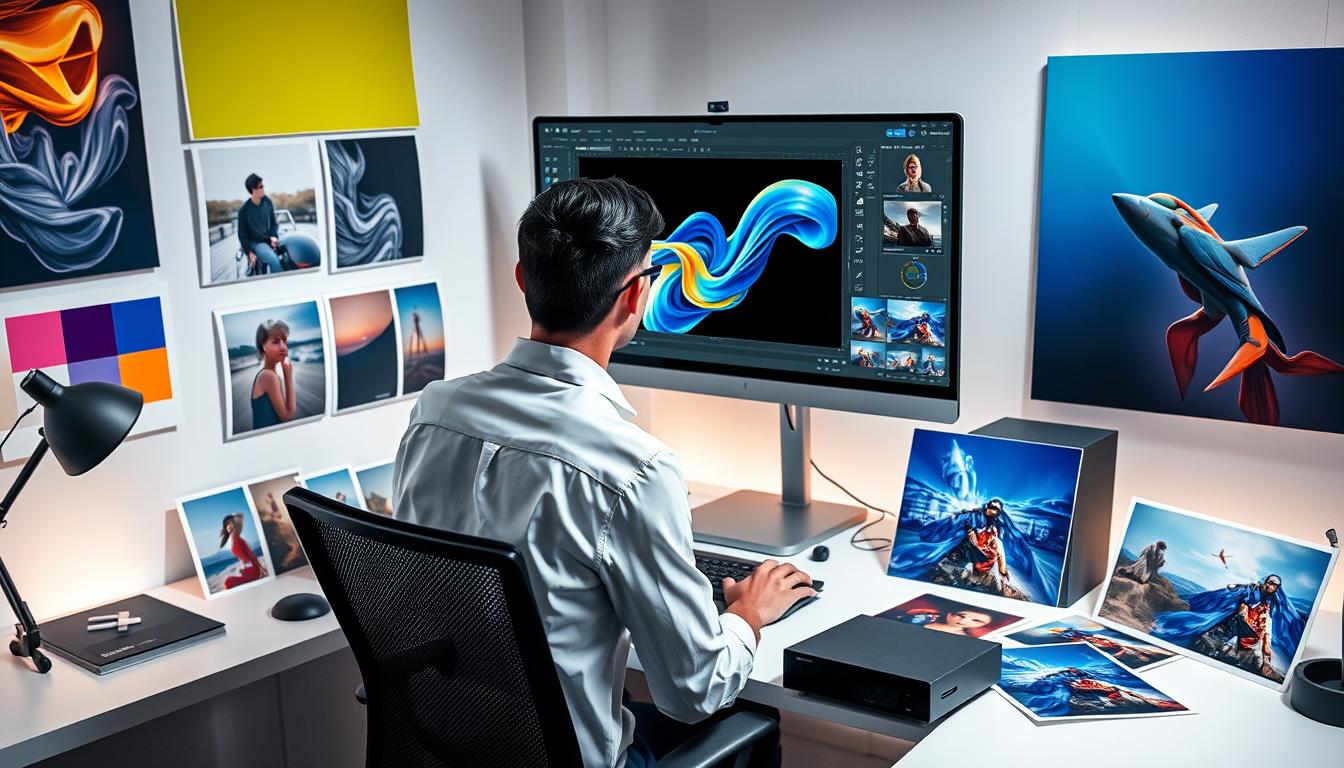Negative space is a key idea in photography. It’s the empty areas around and between subjects in a photo. It makes images look simple, elegant, and focused. You can see negative space in many photos, where the empty areas enhance the image’s impact.
Understanding negative space aids photographers in producing better images. It directs the viewer’s attention to the focal point. As a result, the image is clear, balanced, and distraction-free.
Using negative space well can make a photo stand out. It makes the image more appealing and interesting. Photographers can create refined and elegant photos by thinking about negative space. You can find examples in landscape, portrait, and still-life photography.
Understanding What is Negative Space in Photography
Photography tips often talk about negative space. It’s the empty area between and around objects. This space is key to creating balance in your photos. It helps focus the viewer’s eye on the main subject.
Definition of Negative Space
Negative space is not just empty areas. It’s a design choice that adds depth to your photos. It’s not just about what’s missing, but what’s there to make the image better.
Relationship Between Positive and Negative Space
Positive space includes the objects in your photo. Negative space is the empty areas around them. The balance between these spaces is vital for a harmonious image.
Why Negative Space Matters in Photography
Negative space is important for several reasons. It adds simplicity and focus to your photos. It also helps create depth and can evoke emotions. Whether you’re new or experienced, mastering negative space can elevate your photography.
Psychology Behind Negative Space
In photography, minimalism in photography is key to creating calmness and serenity. Negative space in images can stir emotions and connect with viewers. It helps photographers focus on their subject, making the image simple yet powerful.
Negative space adds depth and dimension to photos. This is done by using a simple background. This way, the subject becomes the main focus. In minimalism in photography, the aim is for a clean, uncluttered look.
Using negative space in photography has many benefits. It can:
- Bring a sense of calmness and serenity
- Make the subject stand out
- Add depth and dimension
- Ensure a clean, uncluttered look
Photographers who use minimalism in photography and negative space create images that move and connect with viewers. These images are powerful and thought-provoking.
Photographers keep exploring negative space to make unique and captivating images. By embracing minimalism in photography, they elevate their work. Their images stand out, showcasing the beauty of simplicity.
Essential Elements of Negative Space Composition
Creating effective negative space compositions involves several key elements. Balance and harmony are crucial for stability and visual appeal. Natural light photography can add depth, while studio lighting adds contrast.
Visual weight is also important. It’s about how elements in an image interact in size, color, and placement. By balancing visual weight, photographers can guide the viewer’s eye. Minimalism in photography helps focus on the scene’s essentials.
- Use natural light for warmth and intimacy.
- Studio lighting adds contrast and drama.
- Try different lighting angles for interesting effects.
By considering these elements and using light creatively, photographers can make striking and thought-provoking images.
Types of Negative Space in Natural Settings
Photographers face unique challenges when capturing negative space in nature. One big challenge is low-light photography, which can make images moody and atmospheric. To tackle this, photographers use various techniques, like adjusting camera settings or adding external lights.
Negative space can be found in many natural settings. For instance, a desert photo with a single tree in the distance shows a lot of space. A cityscape at dusk, with a few buildings and lots of empty space, also conveys negative space.
- Look for simple and uncluttered compositions
- Use a wide-angle lens to emphasize negative space
- Experiment with different angles and perspectives
- Pay attention to lighting conditions, such as low-light photography, to add depth and mood to the image
By using these techniques, photographers can create stunning images. These images showcase the beauty of negative space in natural settings, even in low-light photography conditions.
| Technique | Description |
|---|---|
| Adjusting camera settings | Adjusting aperture, shutter speed, and ISO to capture the desired effect |
| Using external lighting equipment | Using flash, reflectors, or other lighting equipment to add depth and interest to the image |
| Experimenting with angles and perspectives | Trying out different angles and perspectives to emphasize negative space and create a sense of depth |
Creating Negative Space with Different Lighting Conditions
Lighting is key in photography, and it’s crucial for negative space. In portraits, the right light can make the subject feel closer. You can use natural light, studio lights, or shoot in low light to achieve this.
Natural light brings warmth and calm to photos. It’s perfect for capturing a person’s true self. By placing the subject in bright natural light, you create a space that focuses the viewer’s attention.
Natural Light Techniques
To use natural light, place the subject near a window or outside during the golden hour. This light adds depth and highlights the subject beautifully.
Studio Lighting Methods
In a studio, you can play with artificial light for different effects. Adjusting light positions and intensities can create interesting negative space in your photos.
Low-Light Photography
Low-light photography is great for portraits. Using a wide aperture and low ISO creates a cozy feel. It also makes the subject’s features stand out.
Common Subjects for Negative Space Photography
Negative space photography covers a wide range of subjects. Landscape photography is a favorite, as it fits well with this style. It allows photographers to add depth and dimension to their shots.
Here are some common subjects for negative space photography:
- Landscapes, such as mountains, oceans, and deserts
- Cityscapes, with their towering skyscrapers and bustling streets
- Still life, with its focus on simple, everyday objects
In landscape photography, negative space can highlight specific parts of the image. For example, it can focus on a mountain peak or a beautiful sunset. This technique helps create a mood and atmosphere in the photos.
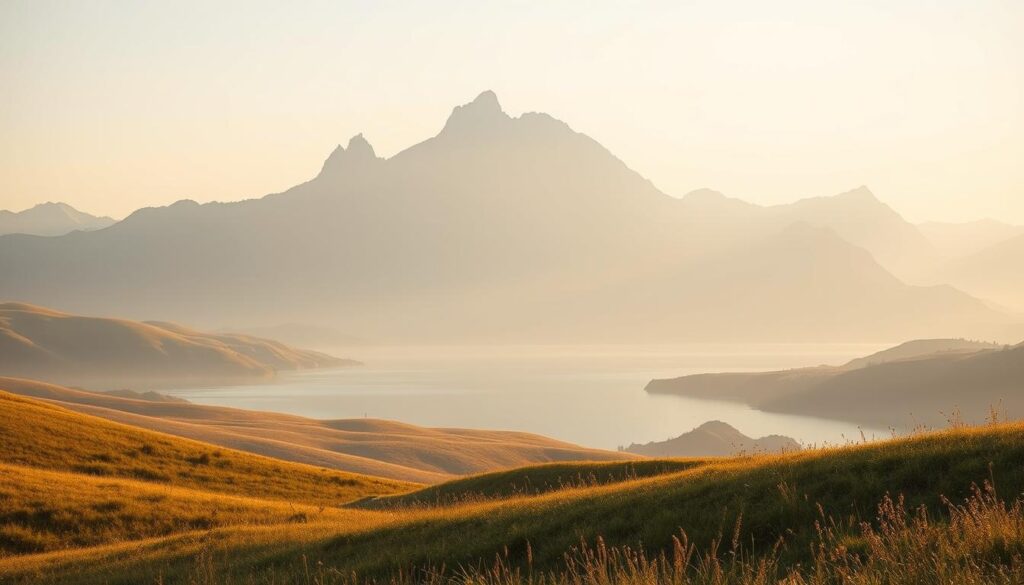
Remember, the secret to negative space photography is to experiment and enjoy the process. Don’t hesitate to try new things. See what works best for your subject and style.
Technical Camera Settings for Negative Space Shots
Getting the right camera settings is key for capturing negative space in photography. In commercial photography, knowing how to use aperture, focus, and exposure is crucial. These technical skills help photographers add depth and emotion to their images, making the subject stand out.
Managing the aperture is crucial in the world of professional photography. When the f-stop value is tiny and the aperture is large, the depth of field is shallow. The topic is isolated from the background by this. Conversely, a larger f-stop value (smaller aperture) allows more of the scene to remain sharp. When you want to zero in on a specific topic or product, this comes in handy.
Aperture Settings
- Use a large aperture (small f-stop number) for a shallow depth of field
- Use a small aperture (large f-stop number) for a large depth of field
Focus Considerations
Focus is also crucial for capturing negative space. By choosing the right focus point, photographers can direct the viewer’s attention. This can make the subject seem more intimate or isolated. In commercial photography, it’s great for showing off a product’s features or adding a sense of luxury.
Exposure Tips
Exposure is vital for capturing negative space, as it affects the image’s mood and atmosphere. Adjusting the exposure can create high contrast, dramatic lighting. This adds depth and emotion to the image. It’s perfect for commercial photography to make visually striking images that grab the viewer’s attention.
Post-Processing Techniques to Enhance Negative Space
Post-processing techniques are key to improving negative space in photos. Effective photography composition and visual balance are vital for a captivating image. Adjusting contrast, brightness, and color balance can add depth and draw the viewer’s eye to the subject.
Opt for picture altering software to elevate your photograph.
- Make the image seem three-dimensional by adjusting the contrast.
- Play with brightness to highlight the subject
- Experiment with color balance to add mood and atmosphere to the image
These techniques can make your negative space more engaging and visually appealing. The goal is to create a sense of visual balance and guide the viewer’s eye through the image.
With practice and patience, you can master post-processing for negative space photography. By combining these techniques with visual balance and photography composition, you’ll create stunning images. These images will capture the viewer’s attention and leave a lasting impression.
Avoiding Typical Pitfalls in Negative Space
Working with negative space in photography requires careful planning. Knowing what to avoid is key to creating stunning images. By understanding common mistakes, photographers can improve their skills.
Some common errors include compositional errors like bad subject placement. Technical mistakes, like wrong exposure or focus, can also ruin a shot. Plus, processing pitfalls like over-editing can harm the final image.
Compositional Errors to Watch Out For
- Poor subject placement
- Inadequate use of leading lines
- Insufficient negative space
Technical Mishaps to Avoid
- Incorrect exposure settings
- Poor focus or depth of field
- Low image quality due to camera settings
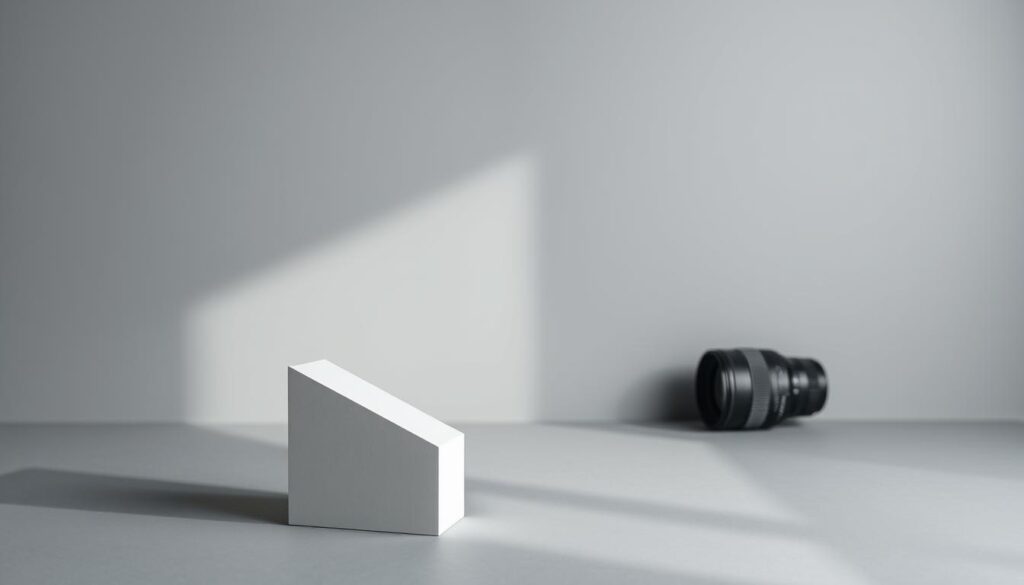
Processing Pitfalls to Be Aware Of
By avoiding these mistakes, photographers can make amazing images. Negative space examples can inspire and guide them. This way, they can improve their skills and create stunning photos.
Creative Applications Across Photography Genres
Negative space is a powerful tool in photography. It helps photographers focus on their subject, creating simplicity and elegance. Natural light adds mood and emotion to the scene.
In portrait photography, negative space creates intimacy. A shallow depth of field and simple backgrounds make subjects feel close and vulnerable. Landscape photography uses negative space to show vastness, drawing the eye to the horizon.
Commercial Photography
In commercial photography, negative space adds sophistication and luxury. A minimalist approach and natural light create sleek, modern images. Here are some examples:
- Product photography highlights a product’s features with a simple background and careful lighting.
- Fashion photography uses negative space for drama and elegance.
- Architectural photography showcases scale and grandeur with negative space.
Photographers use negative space and minimalism to create striking images. These images are emotionally resonant, whether in portraits, landscapes, or commercial work. The right use of negative space can make an image unforgettable.
Finding Inspiration for Negative Space Photography
Looking for inspiration in negative space photography? You can find it in many ways. Try different lighting setups, like studio lighting and low-light photography. This can lead to amazing and unique photos.
- Check out the work of other photographers and artists who use negative space.
- Play with different compositions and angles.
- Notice how light and shadows interact in your environment.
As you keep exploring negative space photography, your creativity will grow. Don’t hesitate to try new things. This will help you master studio lighting and low-light photography.
Staying curious and open-minded is key to finding inspiration. With time and effort, you’ll get better at negative space photography. Your skills and style will keep improving.
Conclusion
Negative space is a powerful tool for photographers. It works in many genres, like portrait, landscape, and commercial photography. Using it well can make your images stand out, show balance, and leave a strong impression.
Whether you’re shooting a beautiful landscape, a portrait, or a commercial photo, negative space is key. It helps you show your subject in a new light. Don’t be afraid to try new things and let emptiness highlight your subject.
Pay attention to how positive and negative space work together. This will help you make images that connect with people and make a lasting impression. So, be creative, use negative space, and watch your photography grow.
FAQ
What is negative space in photography?
In photography, negative space is the empty area around a subject. It’s the space that makes the subject stand out. This empty space adds balance and interest to an image.
Why is negative space important in photography?
Negative space makes photos simple and elegant. It helps focus the viewer’s attention. It also adds depth and emotion to an image.
How can negative space be used to create effective compositions?
With negative space, the components of a picture are balanced. It draws attention to the central idea. It also adds a sense of tranquility to the shot.
What are some common subjects for negative space photography?
Landscapes, cityscapes, still life, and portraits are great for negative space. These subjects help create depth and mood.
How can lighting conditions affect the use of negative space in photography?
Lighting greatly affects negative space in photos. Natural, studio, and low-light setups can change the mood and feel of an image.
What are some common mistakes to avoid when using negative space in photography?
Avoid compositional errors and technical mistakes. Pay attention to balance and focus. These details are crucial for a good photo.
How can post-processing techniques be used to enhance negative space in photography?
Adjusting contrast, brightness, and color can enhance negative space. These changes add depth and interest to the empty areas.
Where can photographers find inspiration for negative space photography?
Find inspiration by trying new lighting, subjects, and compositions. Study other photographers who use negative space well.

